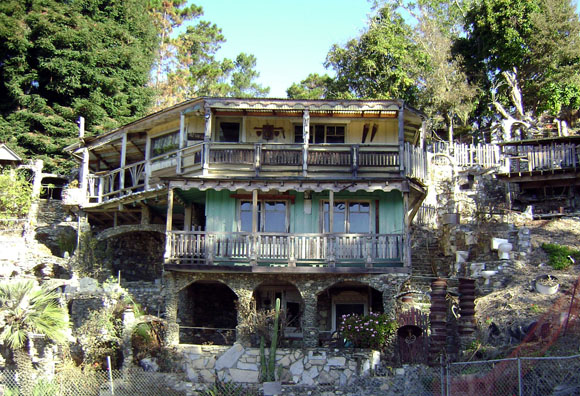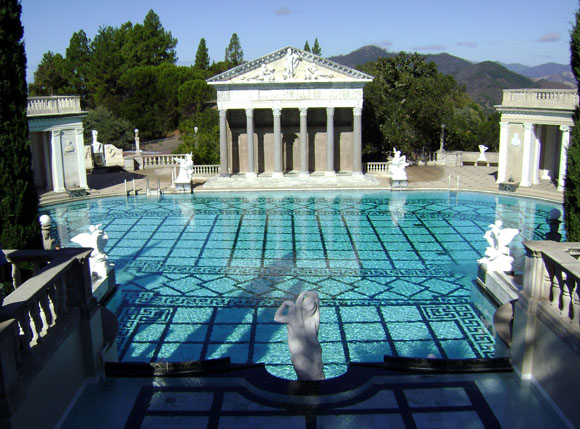
This fall, I found myself on a family vacation along California’s Central Coast and stopped over in Cambria for a couple of nights. The purpose of the stop—beyond enjoying the town and its beautiful coast—was to take my sons to Hearst Castle. What I had forgotten was that Cambria is also home to another idiosyncratic, visionary residence now open for tours. As it turned out, we saw both homes in the same day, and the comparisons proved as enlightening as the tours themselves.
The other residence is Nitt Witt Ridge (California Historic Landmark 939), the home and inhabited folk artwork of the late Art Beal, who hand built his home over more than fifty years using the cast-offs of others. Apparently, Art was once Cambria’s trash collector and was rumored to have worked on William Randolph Hearst’s place just up the road. Along the way he made use of old tires, washing machines, beer cans, car rims, toilets, broken tile, abalone shells—you name it—to inhabit his 2-1/2 acre hillside site. The result was a collage of found and appropriated objects that are somehow spun into shelter.
Nitt Witt Ridge is often referred to as the “poor man’s Hearst Castle,” and for good reason. Both residences are curated collections of what their makers found valuable. Hearst collected things already understood to be valuable and important, things thus available to him because of his vast wealth. Beal, in contrast, elevated the discards of his neighbors to something that seemed beautiful to him. In a world increasingly concerned about our environmental condition and dwindling resources, perhaps there is an important lesson for us.

Author Eric Naslund, FAIA, is a principal at Studio E Architects in San Diego and a member of the San Diego Planning Commission. He currently serves on the editorial board of arcCA.
Originally published 4th quarter 2007 in arcCA 07.4, “preFABiana.” Re-released in arcCA DIGEST Season 10, “Other Beauty.”





